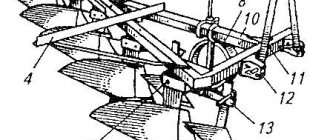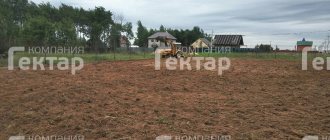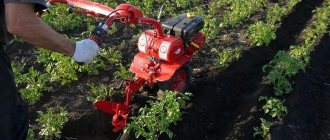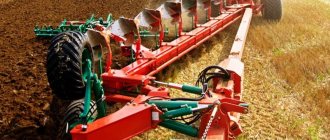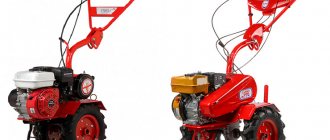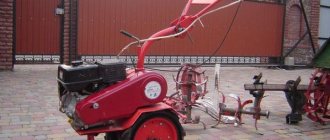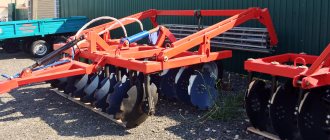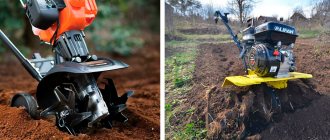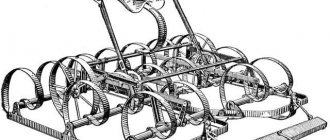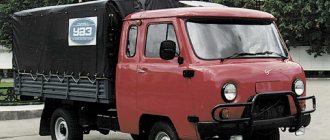The land has been cultivated by man since time immemorial. Manual tillage and mechanized tillage using mechanical arable tools and machines are still practiced. The soil cultivation system has the goal of changing its properties and soil condition. By cultivating the land, people create conditions that are most favorable for the development and growth of cultivated plants, continuously increasing the fertile function of the soil. A brief description of each agricultural technique is given later in the article.
What is it for?
Plowing is used to raise virgin soil - unplowed, untouched land, as well as to improve soils used in agriculture. When plowing, the dense layer of soil is turned over, which allows you to obtain the following results:
- Wrapping topsoil kills surface weeds and damages deep roots.
- Soil crumbling.
- Mixing soil layers.
As a result of this treatment, the soil becomes looser, weed-free, saturated with air, and easily allows moisture to pass to the roots of plants. It is possible to get rid of the soil crust, which impedes the growth of planted plants and the germination of sown seeds.
Surface treatment techniques
Having considered what types of soil cultivation there are, you need to figure out how they can be implemented.
Disking
Using this method, crumbling, loosening, partial mixing of the fertile layer, as well as grinding of the remaining weeds are carried out. It uses a technique such as a disc harrow with spherical discs installed at different angles of attack. For turfy, heavy soils, harrows equipped with cut-out discs are used.
Cultivation
What is cultivation is one of the methods of processing seed soil, which consists of loosening and crumbling it, partially mixing soil layers, and cutting the root system of weeds. Cultivators with tines of various designs are used as the main equipment. Cultivation is performed to a depth of about 6-12 cm.
Harrowing
Thanks to this treatment, lumps and blocks are crumbled, and the surface layers of the fields are leveled and compacted. This is an effective soil treatment before sowing, performed as care procedures for grain and row crops. Tooth harrows and mesh harrows are used for work, which allow you to develop the soil to a depth of 2 to 8 cm.
Trailing
This method consists of leveling a layer of fertile loose soil. This pre-sowing soil treatment is carried out using cultivators, which allow harrowing to be done at the same time.
Rolling
This method is carried out using rollers that crush large blocks, ensuring leveling and compaction of the soil. Rolling is a mandatory technology for pre-sowing treatment, especially for light, sandy, and peat soils. For fields with light soils, rolling, performed immediately after sowing, is highly effective.
Combing
This type of pre-sowing soil treatment is performed to change its surface for the purpose of improved heating and faster seed germination after sowing. To perform these procedures, special equipment such as a hiller is used.
Types of plowing
As a method of cultivating land, plowing has existed since time immemorial. The first processing tests were carried out manually, using improvised objects made of wood, bones and animal horns. Later a wooden plow appeared. Then came the primitive plow, invented in the Roman Empire. It was equipped with wheels and had a metal cutting tip. With its help, it was possible to regulate the depth of the furrow being laid and throw back the plowed soil. This made it possible to significantly improve soil cultivation and have a positive effect on agriculture.
Expert opinion
Zarechny Maxim Valerievich
Agronomist with 12 years of experience. Our best country expert.
Ask a Question
Initially, people themselves served as draft force, then farm animals; after the invention of steam technology, the first mechanized devices appeared. Nowadays, plowing is carried out using various methods using modern instruments and devices. Soil cultivation methods have also been improved, leading to the emergence of several plowing methods.
Plowing with full rotation of the formation
This is the most ancient method, which today has been subject to considerable criticism from experienced agronomists and agricultural scientists. When using it, the layer of earth is turned over 180 degrees, that is, the top layer is at the bottom, and vice versa. Such plowing is mainly intended for processing areas with dense turf, which are impossible or difficult to cultivate using other methods.
The advantage of the technique is a complete revolution of the cut layer, in which the weeds and their shoots and seeds end up below, underground, rot and rot.
Plowing with seam uplift
With this method, the soil is cut and dumped at an angle of 135 degrees. This forms air “pockets” in which moisture accumulates, feeding the crops. Unlike the previous option, not deep furrows and shafts appear on the ground, but ridge structures that help retain precipitation and absorb it into the ground.
This method has a drawback - due to the specific cutting angle, some weeds remain alive and continue to compete with cultivated plantings for water, light and nutrients. However, in our latitudes this is the most popular and widespread method of soil treatment.
Since the listed methods have certain disadvantages, a method was invented that makes it possible to avoid them, improving the quality of processing and soil fertility.
See also
Types and properties of water in soils, how the level can be lowered and increasedRead
Cultural plowing
This is a type of plowing that involves the use of skimmers. Thanks to their use, it is possible to combine all the advantages of the two previous methods: the air “pocket” is filled up, preventing the germination of weeds, and the surface of the plowed area is smooth.
Thus, this method turns out to be intermediate between plowing with a full rotation and with uplifting the layer.
Agricultural and reclamation machines
Uplift is used to create the largest surface area of arable land in order to ensure maximum exposure of the soil to air, heat and light. This type of processing is obtained when using screw working surfaces, when the width of the layer is less than its thickness. Formation uplift is used when processing cohesive turf soils. When uplifted, voids are formed that disrupt the water-air regime of the soil, the arable land turns out to be ridged, and at the junction of layers there is unsealed turf. To eliminate this drawback, they use uglosnim, which cuts off a small triangular soil layer from the field side of the formation and dumps it at the bottom of the furrow.
Cultural plowing is carried out with bodies with cylindrical (cultivated) working surfaces and skimmers during the main cultivation of light old-arable soils, which do not form a layer when interacting with screw working surfaces, but crumble into structural aggregates. The skimmer cuts off a tetrahedral soil prism from the formation and drops it to the bottom of the furrow. At the same time, the main layer crumbles more intensively and covers plant residues more completely. The working width of the skimmer is 2/3 of the working width of the main plow body. If the working width of the skimmer is increased to the working width of the main plow body, then two-tier plowing , which is used when cultivating the soil to a greater depth for crops such as sugar beets and cotton.
Diamond plowing is performed by cutting the soil with two plowshares: from the bottom and wall of the furrow. The cross section of the formation in this case resembles a rhombus. This plowing provides a wide open furrow in which the right wheels of the tractor roll freely.
Moldboardless plowing is a type of deep loosening, which is performed with plow bodies without moldboards. Sometimes moldless plowing is called an alternative type of plowing, since traditional types involve wrapping the soil layer to one degree or another. The main objective of no-moldboard plowing is to increase the moisture permeability of soils in areas of insufficient moisture, subject to wind erosion or located on slopes.
Plowing with a subsoiler is used on soddy-podzolic soils with a shallow podzol, which is only loosened by the subsoiler. As a result of this impact, soil-forming processes occur in the podzolic layer, making it possible to make it fertile in a few years.
Plowing with plows with cut-out bodies is also used on sod-podzolic soils. Its goal is to crumble the podzolic layer, mainly leaving it at the bottom of the furrow and only partially mixing it with the cultivated layer. At the same time, a soil-forming process also occurs, leading to an increase in the thickness of the cultivated layer of arable land.
Three-tier cultivation is used on solonetzic soils for the purpose of wrapping and loosening the upper fertile layer, moving the solonetzic layer down and replacing it with a lower carbonate or illuvial layer.
Depending on the required type of plowing, plows of different designs are used.
***
Classification of plows and their designs
Home page
- Applicant's page
Distance education
- Group TO-81
- Group M-81
- Group TO-71
Specialties
- Veterinary
- Agricultural mechanization
- Commerce
- Vehicle maintenance and repair
Academic disciplines
- Engineering graphics
- MDK.01.01. "Car design"
- Section map
- General structure of the car
- car engine
- Car transmission
- Steering
- Brake system
- Suspension
- Wheels
- Body
- Car electrical equipment
- Basic car theory
- Basics of technical diagnostics
- Fundamentals of hydraulics and heat engineering
- Metrology and standardization
- Agreecultural machines. Agreecultural equipment
- Basics of agronomy
- Transportation of dangerous goods
- Materials Science
- Management
- Technical mechanics
- Tips for graduate student
Olympics and tests
- "Engineering graphics"
- "Technical Mechanics"
- "Engine and its systems"
- "Car chassis"
- "Car electrical equipment"
Tools for work
In agriculture, various plowing devices are used to provide soil cultivation for further planting of cultivated plants.
Motor winch
This is a plowing device that pulls a plow or cultivator behind it on a cable. The motor winch is excellent for cultivating household plots and summer cottages, as it is intended not only for plowing, but also for other operations:
- Hilling.
- Planting and digging potatoes.
- Transportation of goods around the site.
Using a motorized winch, plowing is carried out using the moldboard method.
Walk-behind tractor
This is a self-propelled device with a wheel shaft drive. Its advantages are the ability to move forward and backward, as well as versatility of use. A number of additional devices can be mounted on the base of the walk-behind tractor - from a cultivator and seeder, mower and harvester to a miniature vehicle. With its help, you can transport fertilizers around the site and provide feed to farm animals.
Plow
The modern plow is very different from its ancient prototype. There are several device options, divided according to the following characteristics:
- By type of cutting elements: plowshare and disk.
- According to the principle of traction: horse, rope and tractor.
- According to the number of working elements: single-, double- and multi-body.
- General purpose and special.
- According to the plowing method - for smooth plowing and furrow plowing.
The type of plow used, as well as the depth of plowing, depend on the soil and purpose of plowing, and what plants are planned to be planted in the future.
Tractor
This is a wheeled or tracked vehicle that performs numerous jobs and operations using mounted implements. Arable tractors with wheel drive operate at a speed of 6-10 kilometers per hour, with caterpillar drives - 10-20 kilometers per hour. The technical characteristics of the latter type take into account the characteristics of high-speed plowing: they have enough power and good tillage speed.
See also
Characteristics of meadow-chernozem soils, how vegetation is usedRead
When they plow the land in the fall. Proper plowing in autumn and spring.
We plow and harrow at once
We figured out when to plow the land. In any case, it is necessary in the fall. Now I understand how to do it.
In autumn, deep plowing should be done. But when? The climate zone plays a big role here, because temperatures are different everywhere. Plowing should be done in late autumn, after harvesting, when it gets cold. In the southern regions, plowing can be carried out in December.
Here is another example of the fact that you need to plow your garden at the end of autumn, before frost. If you plow your garden earlier, some weeds will still grow before the cold weather sets in. Which means all your work will go to waste. That is why even garden trees are pruned in September, not earlier.
It is very important to plow the soil before the temperature drops below +5 ºC at night. At such a time, the ground is still soft to plow, and the weeds will no longer grow and their seeds will not germinate. In general, for most regions, November is the ideal month for deep plowing of vegetable gardens. Although this is how it is here - in the Kemerovo region, September, somewhere towards the end of the month.
By the way, if the soil is clayey or sandy, then when plowing you can fertilize the soil with humus or manure. This will increase soil fertility. But not fresh. Straw or manure should burn out within a year. Otherwise, there will only be harm to the soil.
What are we doing now in the spring? Everything is simpler here. We only need to carry out soil reservation. This should be done as soon as the top layer of soil dries. Many people now do this: if the garden is large, then they go through it with a tractor cutter. You can do it this way, if you don’t plant it deeply. Then the layer of soil with beneficial bacteria will remain unharmed.
